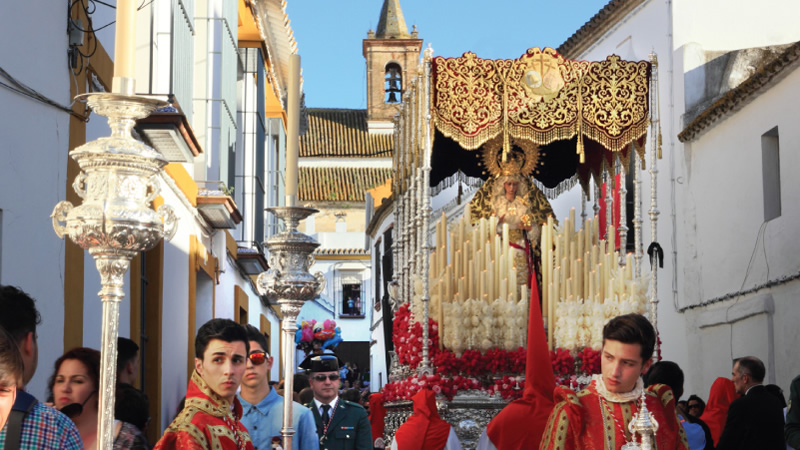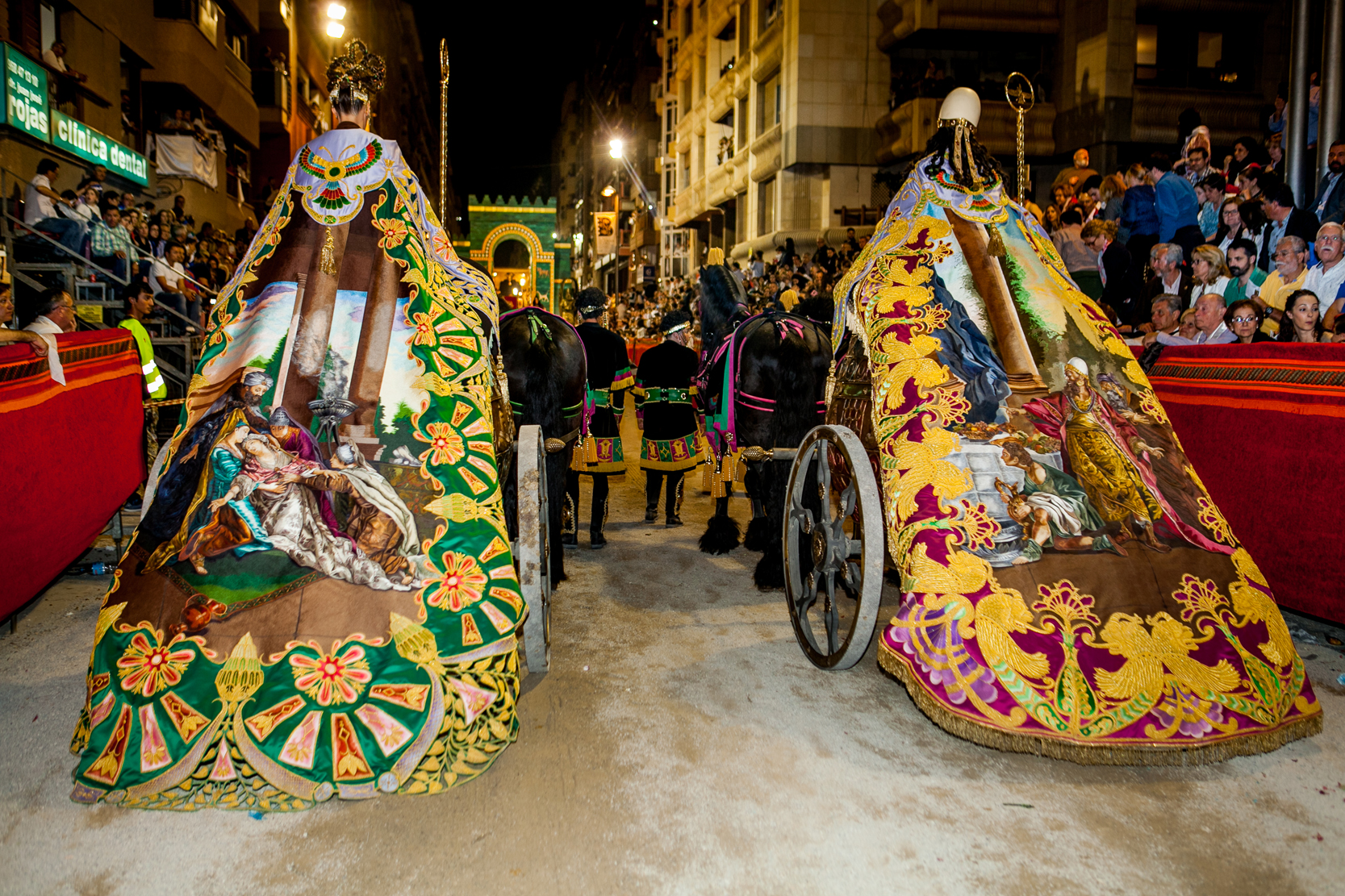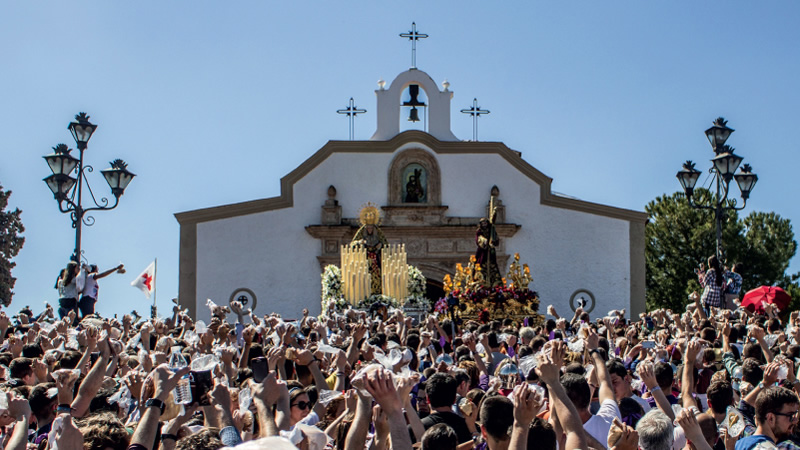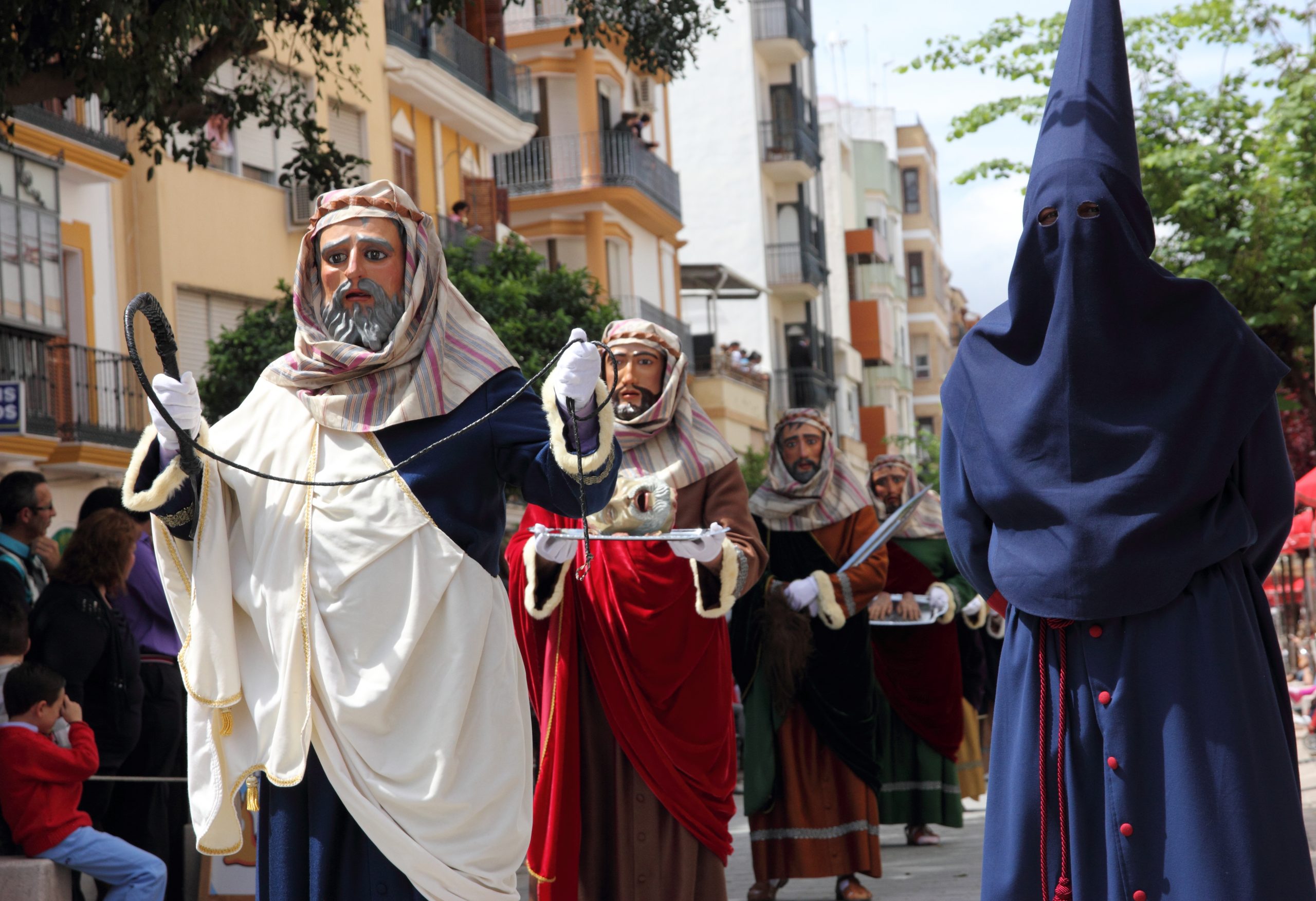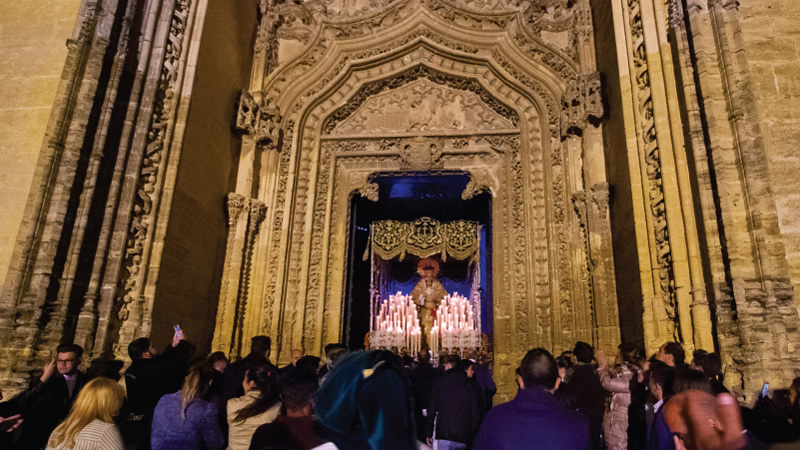
Holy Week in Utrera is one of the most important religious and festive events in the city, enjoying enormous fervor among its neighbors.
During the seven days of the Passion Week, a total of 13 brotherhoods procession through the beautiful streets and lively squares of the municipality, all of them running through an official route located in the Plaza del Altozano where boxes and chairs are installed. In the processions the religious and artistic legacy of the Utreran brotherhoods can be appreciated, some of them founded between the 16th and 18th centuries.
The heritage richness of its impressive historic center, the legacy of brotherhoods with centuries of history, the sound of bands, saetas and the idiosyncrasy of a people that, spontaneously, shows devotion and respect to their traditions make Holy Week in Utrera an essential appointment for the traveler. A unique opportunity to let yourself be carried away by the light, the smell and the spirit that surrounds the city at the party.
 The origin
The origin
The beginnings of Holy Week in Utrera date back to the 16th century. Throughout its development it has been strongly linked to the models followed by the brotherhoods and processions of Seville and practically follows the same patterns as this, in the artistic and religious.
Although, this municipality prints its idiosyncrasy and personality as can be seen in the passage of the Hermandad de la Trinidad through the arch of the Villa, the early morning songs of the gypsies, the red flowers and the black dress of the Virgen de los Dolores, or the touch of the rattle in Santa María typical of Maundy Thursday and Good Friday.
Among its particularities, it is noteworthy that Utrera has an autochthonous trabajadera – called Utrerana – that runs longitudinally from front to back, unlike Sevillian, which is transverse, and that is the which is used today in all Utreran processions, with the exception of the Misterio del Cristo del Amor of the Brotherhood of Students. In the same way, it still retains its own lexicon as regidor (diputado de tramo), variation (revirá), cuadre (igualá), entrenamiento (ensayo) or clavería (Governing Board).
But beyond that, Holy Week in Utrera is one of the most important in Andalusia due to the devotion and fervor that its neighbors profess and because of the way in which the city decorates itself to receive the processions through its beautiful cobbled streets.
Day to day
La Borriquita, belonging to the Hermandad de la Trinidad, opens in the morning on Palm Sunday in Utrera. In the afternoon there are two brotherhoods that procession: La Oración en el Huerto, of the Hermandad de Jesús Nazareno, and La Quinta Angustia. When this last brotherhood passes through the convent of Hermanas de la Cruz, the image of Santa Angela de la Cruz is placed in front of the processional float.
On Holy Monday from the Santuario de Consolación, the Muchachos de Consolación Brotherhood comes out, which features the Cristo del Perdón, an anonymous sculpture from the 16th century, and the Virgen de la Amargura.
Holy Tuesday is the turn of the Brotherhood of Students. The misterio de la Sagrada Lanzada, presided over by the del Amor and followed by the Virgen de las Veredas, under a canopy.
The Brotherhood of Los Aceituneros, leaves on Holy Wednesday, has two steps presided over by Jesús Atado a la Columna (17th century) and the Virgen de la Paz.
On Maundy Thursday the Brotherhood of the Trinidad processions again, in this case with the Cristo de los Afligidos and the Virgen de los Desamparados. The Brotherhood of Cautivo with the Cristo Redentor Cautivo and the Virgen de las Lágrimas also makes its departure this day. This brotherhood is known as that of ‘El Silencio’ because of its sobriety.
Already at dawn on Good Friday you can enjoy what is known as the ‘Gypsy Madrugá’, in which the gypsies of Utrera sing to their headlines: the Cristo de la Buena Muerte and the Virgen de la Esperanza. Once this brotherhood has been collected, the processional exit of Jesús Nazareno, the main devotion of the city, makes its procession. His dolorosa, the Virgen de las Angustias, is the oldest painful under canopy in Utrera (17th century).
On the afternoon of Good Friday, the brotherhoods of the Vera Cruz – oldest corporation – and the Cristo de los Milagros, the newest, procession. Jesus tied to the column, is a work of the seventeenth century and its passage is known for its large dimensions. The canopy of the Virgen de los Dolores is one of the jewels of Utrera’s Holy Week. For its part, the Cristo de los Milagros is an anonymous sculpture from the 16th century and is accompanied by a vocal trio and fourteen candles alluding to the fourteen stations of the Cross.
 On Holy Saturday the Brotherhood of the Vera Cruz returns with the Santo Entierro. The Virgen de los Dolores now comes out dressed in mourning. Finally, on Easter Sunday, the Sacramental Brotherhood of Santa María performs a procession under a canopy with the Blessed Sacrament, accompanied by the authorities and brotherhoods of the General Council of Brotherhoods and Confraternities of the town.
On Holy Saturday the Brotherhood of the Vera Cruz returns with the Santo Entierro. The Virgen de los Dolores now comes out dressed in mourning. Finally, on Easter Sunday, the Sacramental Brotherhood of Santa María performs a procession under a canopy with the Blessed Sacrament, accompanied by the authorities and brotherhoods of the General Council of Brotherhoods and Confraternities of the town.

